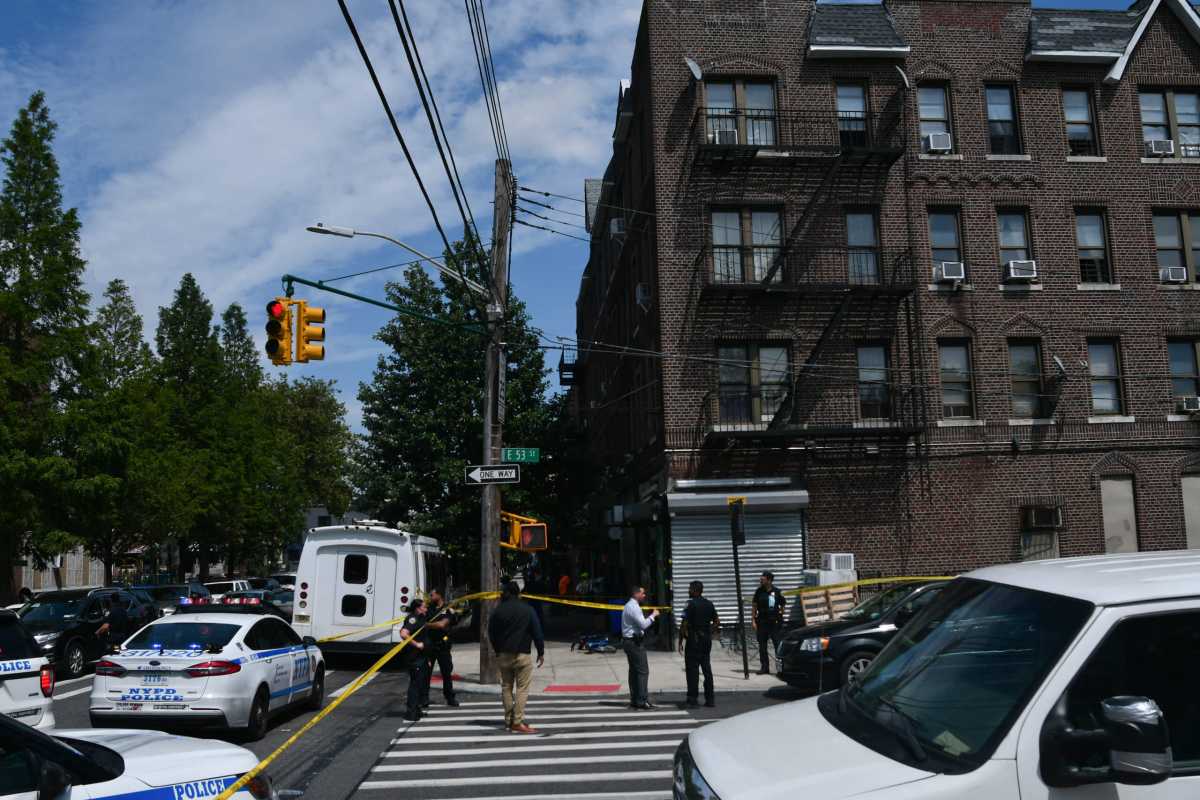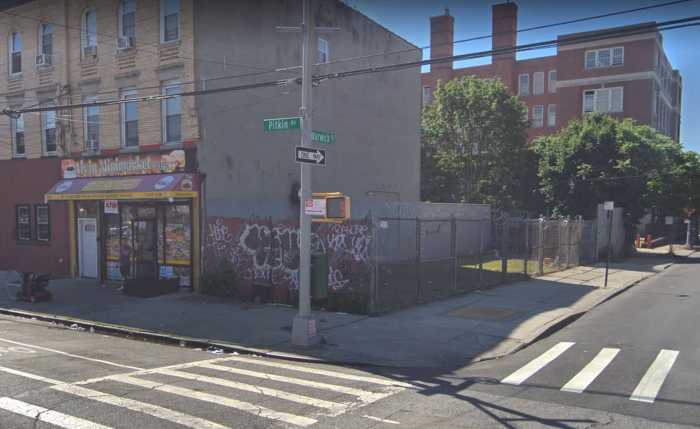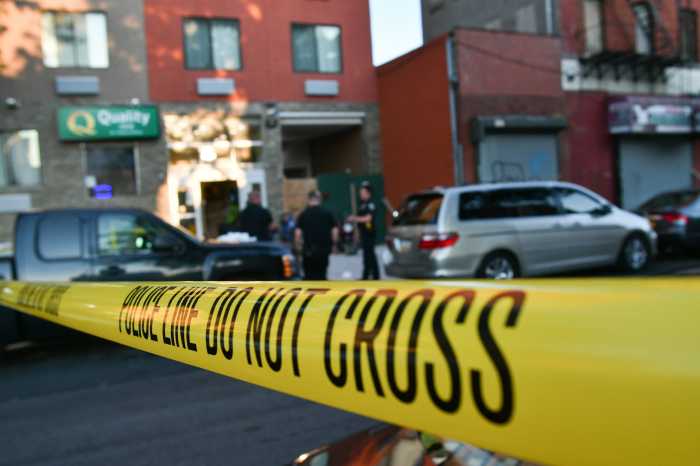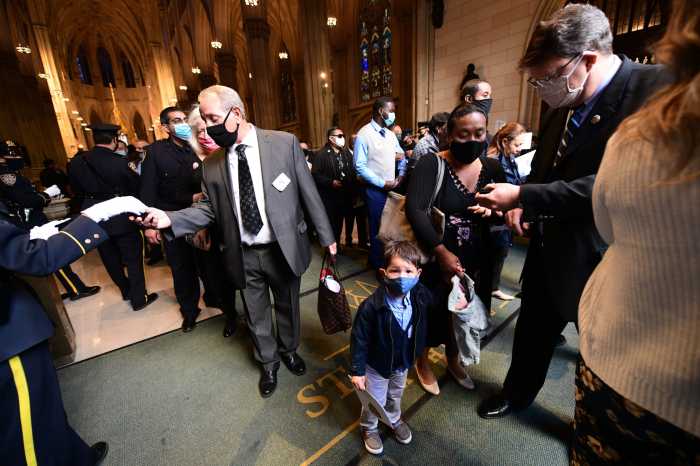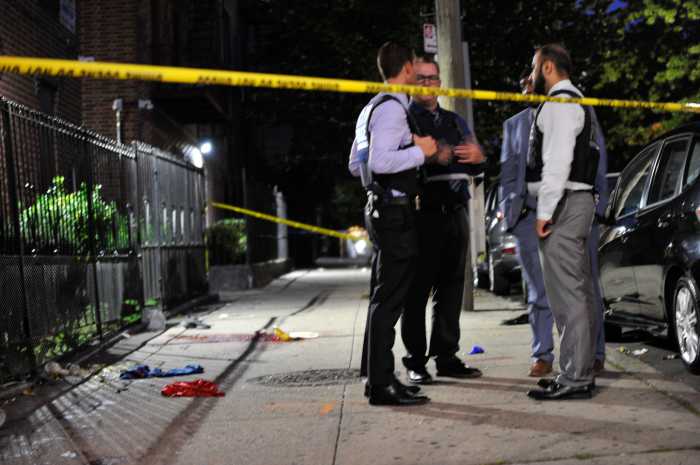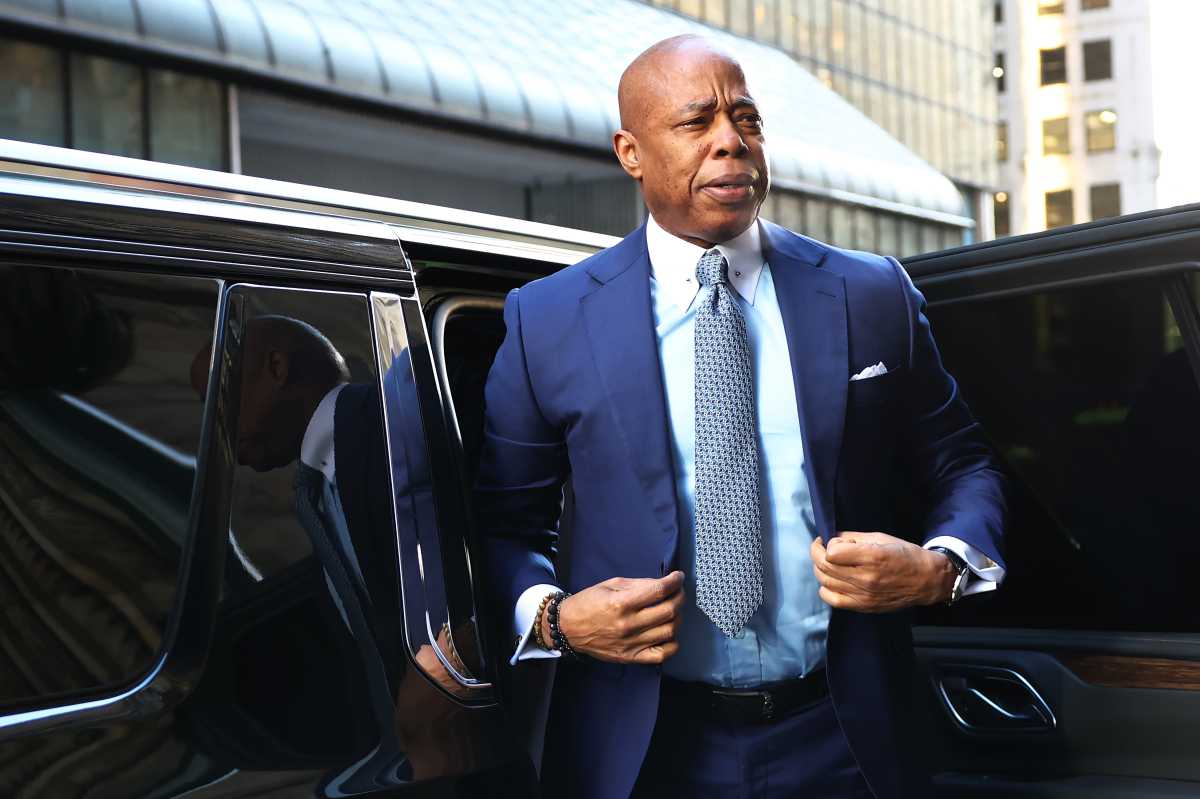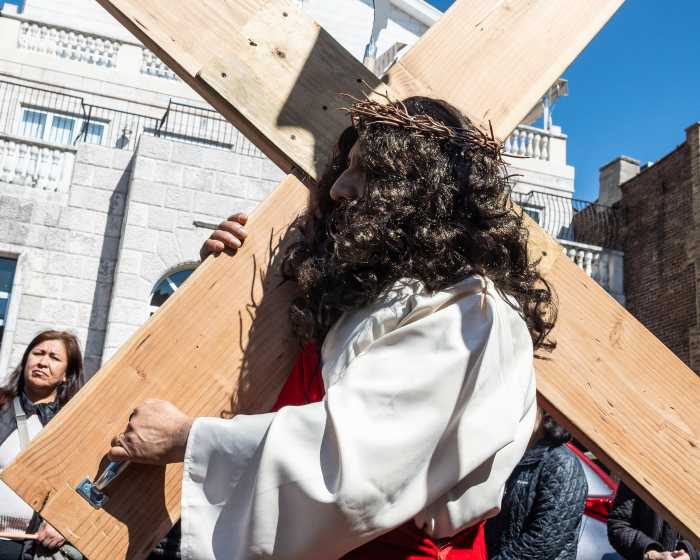The NYPD’s set to release a new set of statistics Monday outlining the state of gun violence in New York City — something that’s run rampant since just about last summer.
After a steady decline over the preceding decade, the number of shooting victims more than doubled between 2019 and 2020 — with 1,868 people shot in the Five Boroughs in 2020, compared with just 923 victims the previous year.
So far in 2021, the city has seen 931 victims of gun violence, compared with 762 during the same time period last year — marking a 22% increase in the number of shooting victims.
Brooklyn is on pace to nearly match 2020’s number of shooting victims in 2021, as 306 people have already been shot in Kings County, compared with 307 between January and mid-July of last year, according to NYPD stats.
The rise in violent crime has sparked widespread concern among the public, with the topic becoming the number one issue among voters in June’s mayoral primary election, according to a NY1 poll from May. A hefty 46% of those surveyed chose “crime or violence” as their main concern, outpacing “affordable housing” at 31% and the pandemic at 30%.
Brooklyn Borough President Eric Adams, a former police officer, ultimately prevailed in the Democratic primary, largely by focusing his campaign on tackling gun violence.
The issue became so salient around the country that President Joe Biden convened a meeting of local stakeholders, including Adams, to discuss ways that the federal government can assist in stomping out violent crime.
“We recognize that we have to come together to fulfill the first responsibility of a democracy and to keep each other safe,” Biden said at the White House meeting. “And that’s what the American people are looking for when it comes to reducing violent crime and gun violence.”
Plans for peace, then shots ring out
Last week, Adams and Governor Andrew Cuomo appeared together in Brooklyn at a press conference in which gun violence was a big focus. Hours after the event, however, a shooter gunned down a 21-year-old man just a mile away.
Officers rushed to the scene at the corner of Clarkson Avenue and E. 53rd Street at around 2:30 pm on July 14, where they found Brooklynite Pierrot Simeon with multiple gunshot wounds to his torso and left forearm.
Paramedics rushed the victim to Kings County Hospital, where doctors pronounced him dead a short time later. Police have not made any arrests in the case, and the investigation remains ongoing.
Before the shooting, Cuomo had reemerged with a cadre of pols and community leaders to announce a new youth jobs program that he hailed as a necessary measure to stop crime before it happens.
“One of the most important strategies is to get young people before the fact,” Cuomo said at the church on Wednesday. “Before they enter the pipeline of the system, because once they’re in the system, that pipeline only leads to one place.”
The program would create nearly 4,400 jobs in Central Brooklyn, including 2,000 temporary summer youth employment positions for people aged 15-24, along with 2,388 full time positions in trades like carpentry, baking, and electrician work, Cuomo said.
Wednesday’s shooting — and the symbolism of the proximity to Cuomo’s anti-gun-violence meeting — underscored for many the need to address the issue head on, including local Councilmember Farah Louis, who called the issue an “epidemic.”
“We cannot accept shootings in our community as the new norm. Gun violence is an epidemic that requires us to work collectively to end it,” Louis said in a statement on July 15. “Investments in proven community violence intervention programs are needed, but we must also identify ways to stop the flow of illegal firearms used to commit these crimes.”
Guns and bail reform
The debate over the increase in crime often devolves into a back-and-forth over a 2019 change to the New York State bail laws, which took effect in early 2020.
Those reforms, which were pushed by progressive legislators, including some in Brooklyn, limited the ability of judges to impose cash bail for suspects of some crimes while they await trial.
Activists estimated at the time that it would reduce the population of the state’s then-7,822-person jail system by around 40%, as people who could theoretically be released previously, if they were able to stake the money for bail, would now automatically be let out while awaiting trial without having to cough up the funds.
Commissioner Dermot Shea took to social media in April to openly call for Albany pols to rethink the bail reform, seemingly blaming it for the rise in crime.
A report from the mayor’s office from earlier this year, however, throws cold water on the theory that bail reform is a significant contributor to violent crime.
That study, which looked at crime statistics between mid-2017 and September of 2020, found that 75 percent of people who were arrested and charged after bail reform was enacted were not awaiting trial for a different crime, which is just slightly lower than the 81 percent prior to the bail law being enacted.
Proponents of the bail reform point out that violent crimes — such as assault, and all charges related to someone’s death — which are indicators that someone may re-offend, are eligible for cash bail. Only less serious crimes, such as vandalism and drug possession were affected by the reforms, but perpetrators of those acts are not as high of a risk to commit violent crimes while awaiting trial.
Nevertheless the bail reform sparked a heated debate between reformers and the tough-on-crime community.
Politicians like Adams and Cuomo have somewhat straddled the fence on the issues, supporting the concept of bail reform while advocating for some changes.
Both men, though, spoke on Wednesday of the need to address crime with a holistic approach, including by investing in education, mental health resources, job training, and more, which they say would root out the systemic causes of violence in the city.
“Those countless men and women, everyday workers, they want safe streets, they want their children educated, they want to stop hearing gunshots instead of alarm clocks, they want to make sure they’re employed and can live in the city,” Adams said.



